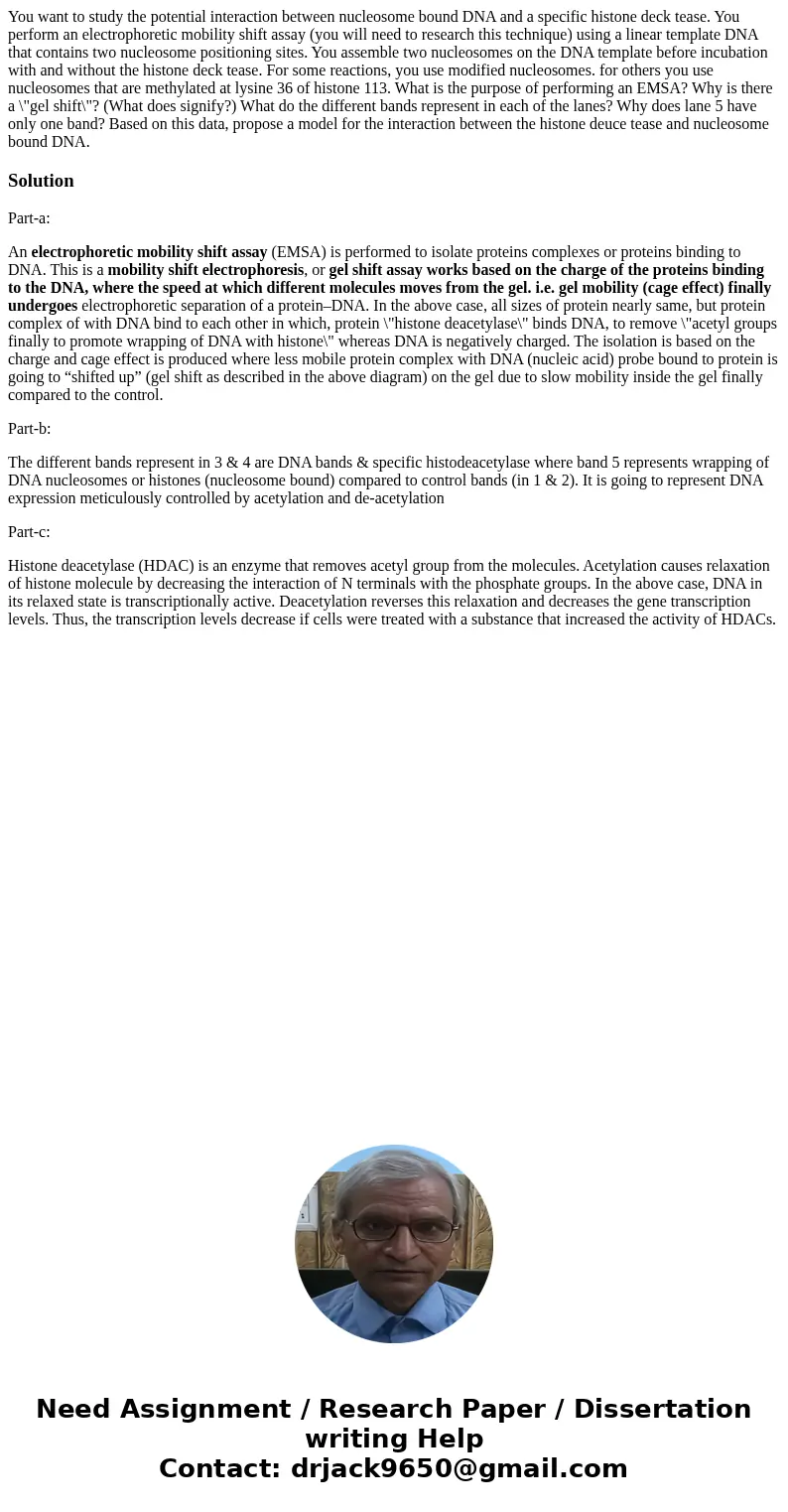You want to study the potential interaction between nucleoso
Solution
Part-a:
An electrophoretic mobility shift assay (EMSA) is performed to isolate proteins complexes or proteins binding to DNA. This is a mobility shift electrophoresis, or gel shift assay works based on the charge of the proteins binding to the DNA, where the speed at which different molecules moves from the gel. i.e. gel mobility (cage effect) finally undergoes electrophoretic separation of a protein–DNA. In the above case, all sizes of protein nearly same, but protein complex of with DNA bind to each other in which, protein \"histone deacetylase\" binds DNA, to remove \"acetyl groups finally to promote wrapping of DNA with histone\" whereas DNA is negatively charged. The isolation is based on the charge and cage effect is produced where less mobile protein complex with DNA (nucleic acid) probe bound to protein is going to “shifted up” (gel shift as described in the above diagram) on the gel due to slow mobility inside the gel finally compared to the control.
Part-b:
The different bands represent in 3 & 4 are DNA bands & specific histodeacetylase where band 5 represents wrapping of DNA nucleosomes or histones (nucleosome bound) compared to control bands (in 1 & 2). It is going to represent DNA expression meticulously controlled by acetylation and de-acetylation
Part-c:
Histone deacetylase (HDAC) is an enzyme that removes acetyl group from the molecules. Acetylation causes relaxation of histone molecule by decreasing the interaction of N terminals with the phosphate groups. In the above case, DNA in its relaxed state is transcriptionally active. Deacetylation reverses this relaxation and decreases the gene transcription levels. Thus, the transcription levels decrease if cells were treated with a substance that increased the activity of HDACs.

 Homework Sourse
Homework Sourse